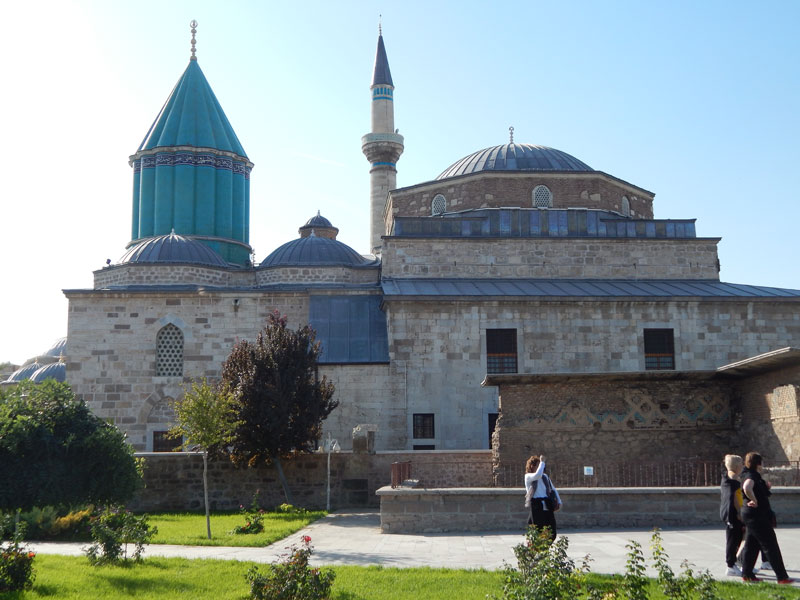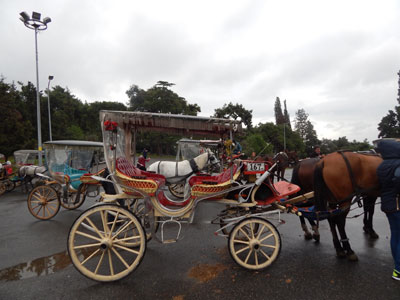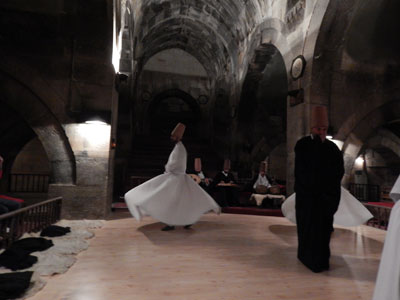Meaningful personal interactions enhance two back-to-back European tours
This article appears on page 32 of the August 2016 issue.
Editor’s note: In light of the recent deadly attack in Istanbul, ITN staff considered whether or not to run the following article as scheduled, as it involves travel in Turkey and, specifically, Istanbul. In the end, we decided to go forward with publication, hoping that the writer’s message — focusing on the value of personal interactions, both with locals and other travelers, in providing insight and understanding between different cultures — would be an important one to share, especially at this time. Our sincere condolences go out to the victims and families of that horrific act.
I was on back-to-back trips with Overseas Adventure Travel (Cambridge, MA; 800/955-1925, www.oattravel.com) in October and November 2015 — nearly six weeks of travel including about two weeks on my own. (My total trip cost, including round-trip air from Los Angeles, was about $6,000.)
My first tour was through Turkey, followed by eight solo days. Then I joined “Crossroads of the Adriatic,” which included Croatia, Montenegro, Bosnia & Herzegovina and Slovenia, with a few independent days at the end.
What made this an outstanding trip and not just a really good one were the interactions I had with the locals, both personal and cultural in nature, some as part of the organized tour and some independently.
A very special encounter
During my tour of Turkey, our group had an overnight stop in Konya, one of the most religiously conservative areas in the country. There we visited Ru¯mı¯’s tomb, the final resting place for the 13th-century Persian poet Jala¯l ad-Dı¯n Muhammad Ru¯mı¯, who inspired the Mevlevi Order of Sufism.
Between the call to prayer, the piped-in music that could be heard simultaneously indoors and out, the beauty of the Islamic architecture and seeing the observant Sunni Muslims who had come to pray, it was an experience like no other.
Our guide told us in advance that the people who visit the tomb/mosque to pray can get quite emotional and are often driven to tears and fits of crying over the loss of a loved one or an illness they cannot cope with for themselves or a family member.
So, with shoes off and paper booties on my feet, I entered the mosque to see the tomb. I stood behind those in prayer and just took in the entire scene.
Then one woman, showing her tears and obviously in some sort of pain, walked by me to leave. Our eyes met, and I could see that she was so distraught after her prayers, so I offered a small bit of compassion by touching her arm, rubbing it softly.
She kept looking at me and reciprocated the gesture. Continuing to look at me in spite of her tears, she was still rubbing my arm softly as she walked away.
A Jew and a Muslim, an American and a Turk, the differences between us at that moment did not matter. We were human beings communicating in the same language in a way that transcended all possible cultural and religious boundaries.
The visit to the mosque may have been part of the OAT tour, but this particular moment was mine alone.
Cultural assumptions
As part of my eight days of solo travel between tours, I took a trip to Princes’ Islands on my last full day. I had booked it on Viator.com ($70), but the on-ground provider was Plan Tours (Istanbul, Turkey; www.plantours.com).
We crossed the Sea of Marmara on a commuter ferry to go to one of several outlying islands, Büyükada. Cars are prohibited on the island, so our group was given a ride by horse-drawn carriage, followed by an included lunch.
In cold and rainy late October, it was quite chilly, so those of us on the tour spent more time getting to know each other and staying warm. What a cultural treat that turned out to be!
In our group of eight, I was the only American. The majority of travelers were from Pakistan, with two people from China. We were a mix of ages, from twenties to sixties.
One of the Pakistanis told me that he was going to London after this tour and wanted to know what to see. I made a few suggestions to him, including crossing Abbey Road. That turned out to be a conversation stopper.
“What is that?” he asked.
The Chinese gal began to sing, “She loves you, yeah, yeah, yeah,” and he had never heard that song before. Neither had his friend. Neither had any of the other Pakistanis in the group. They had never heard of the Beatles.
It was an amazing conversation. I was looking up information on the Beatles online for them, and when I typed the word “John” into one of their cell phones and “Lennon” popped up automatically, I explained that he had been shot and killed. One of the Pakistanis looked at me with surprise.
“If he was as popular as you say, why would someone try to kill him?”
Well, that was a very good question, one we will never have an answer for.
One of the older people in the group who was closer to my age said, “I am in the record business in Pakistan. If there really is this music group ‘The Beatles,’ surely I would have heard of them.”
It was admittedly surreal, but this interaction caused me to think about all the other cultural divides we have with people we meet on our travels, many of which we are unaware of.
Finally, I told the man going to London not to bother with visiting Abbey Road. It would not mean anything to him.
A remarkable book
The second OAT tour, “Crossroads of the Adriatic,” made a number of fantastic stops, one of which included three days in Sarajevo, Bosnia. We stayed at the Hotel Europe there and had some unique experiences.
During some free time in the city, I wanted to see the Sarajevo Haggadah, one of the most highly valued illuminated manuscripts in the world. This Passover Haggadah has survived the Inquisition, World War II and the Bosnian War.
In each of the latter two instances, it was protected by someone of the Muslim faith. For this reason, it has become a symbol of interfaith cooperation around the world. (A fictional account of it is written about in “People of the Book” by Geraldine Brooks.)
The Haggadah is currently in the National Museum of Bosnia & Herzegovina (www.zemaljski
muzej.ba), now open after being closed for years. With two days’ advance notice, visitors can see the manuscript for a minimal fee; for $3 you can see it from about 15 feet away, but for $13 an archaeologist will accompany you and open the climate-controlled room in which it is the centerpiece. I was even allowed to take pictures!
All of the museum’s workers are volunteers, which is the only reason this museum remains open today.
Getting there and back from the center of Old Sarajevo was quite easy on the local (and free) tram. The tram ride was an experience in itself, but the uniqueness of all of it put together made for a real highlight.
A magical musical tour
The last stop on this tour was Ljubljana, Slovenia, which sits at the crossroads of Austria, Hungary, Italy and all of the former Yugoslavia, of which it was once a part.
Because of its unique geographical location, great classical musicians from all over Europe have made stops in Ljubljana at one time or another. So, today, that musical heritage is honored with a street filled with the busts of classical musicians.
A special music school resides in the heart of town, and children can be seen coming and going carrying various musical instruments. Music is played all over the city at any time of day or night.
To learn more about this glorious city and its musical history, I took the fantastic “Ljubljana Music Walk,” offered exclusively by Ljubljana Guides (www.ljubljanaguides.com). I booked the approximately 3-hour tour on Viator.com ($50).
I was accompanied by not only a guide but a private violinist! The violinist, a street musician, performed between eight and ten violin solos that pertained to the stops the guide was talking about.
The tour also included a stop in a musically themed restaurant, where the violinist also played piano, and the small amount of promised snacks turned into a full party platter.
The “party platter” was soon replaced with creamed cakes and other pastries from the region.
A second stop was made for some wine tasting as well as tastings of the regional specialty of blackberry and honey brandies.
Before the evening was through, the violinist performed a fantastic medley of Slovenian folk songs and classical music, culminating in a portion of Vivaldi’s “Four Seasons.”
The owner of the company joined the three in our group for snacks, and since I was traveling solo, this was a great way to enjoy local interaction. I had come for the music, but I left with hugs and new friends.
It was a fantastic way to end six wonderful weeks.




